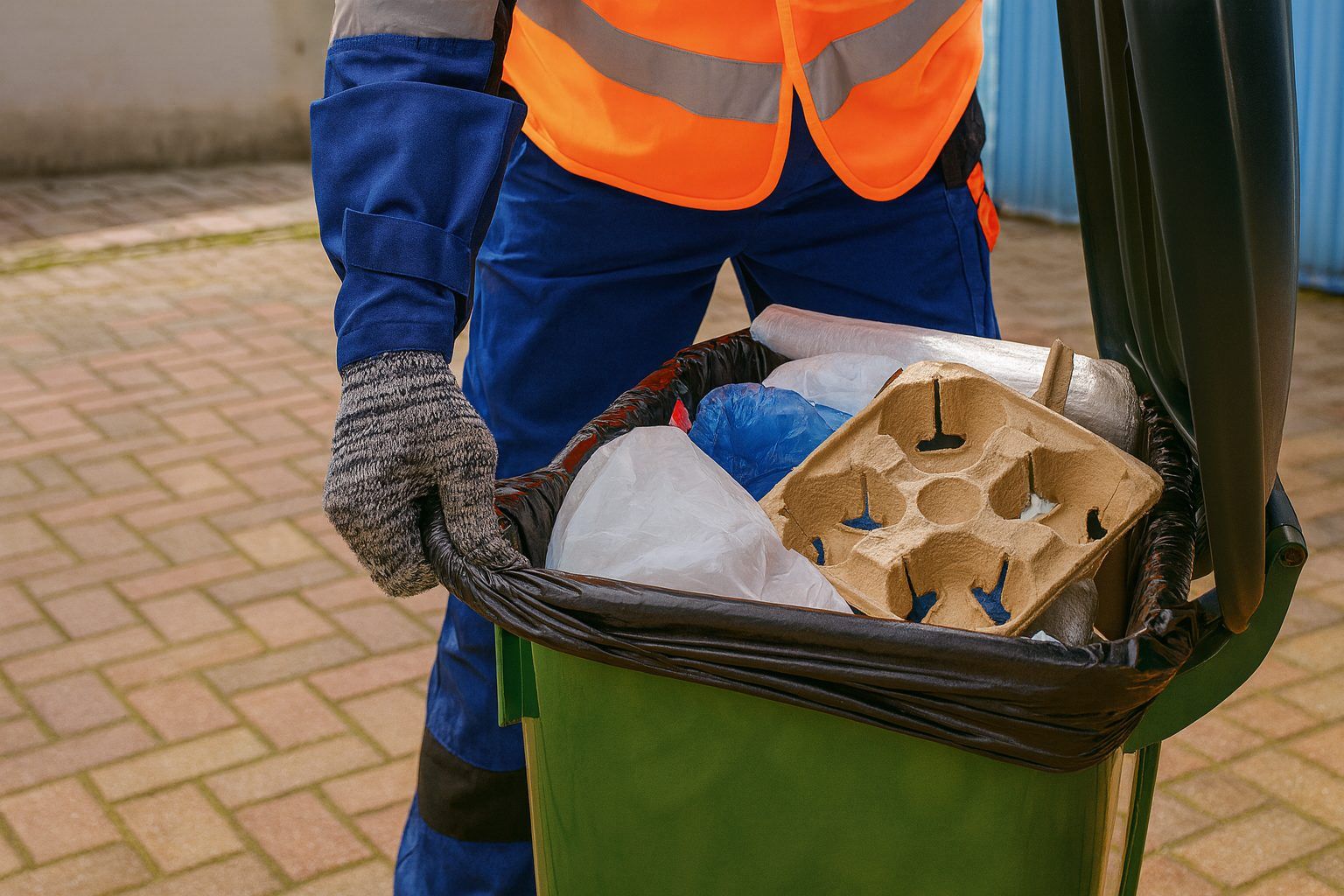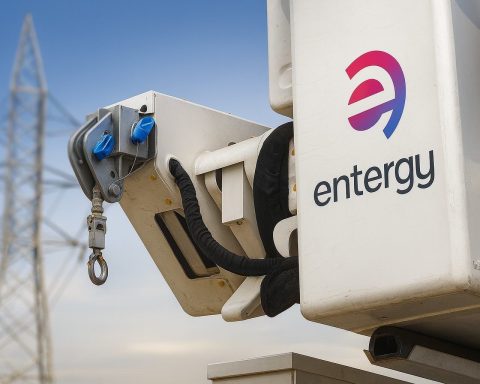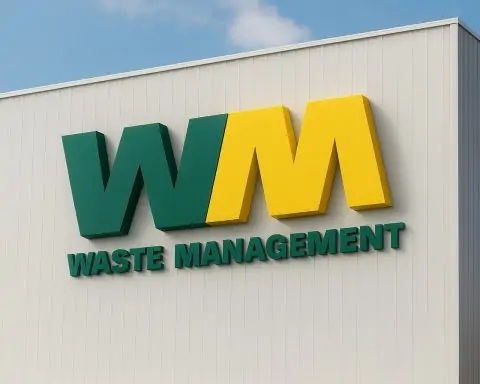Published: November 26, 2025
Americans are pulling turkeys out of ovens today – and, quietly, pulling a lot of extra greenhouse gases into the atmosphere. At the same time, new research and market reports released on November 26 highlight how better waste management and digital traceability could transform everything from informal recycling in emerging markets to offshore oil rigs.
Taken together, today’s news paints a clear picture: waste is no longer just a pollution problem. It’s a data, equity and investment opportunity – if governments, companies and households are willing to change how they handle it.
Key numbers at a glance (Thanksgiving 2025 & waste)
- 320 million pounds of food expected to be wasted this Thanksgiving in the U.S. alone. [1]
- That’s more than 800,000 metric tons of CO₂, roughly like running 190,000 gasoline cars for a year, plus 4,800 metric tons of methane from landfills. [2]
- New data show Americans are likely to toss around 145,000–160,000 metric tons of food on Thanksgiving Day, worth about $550 million. [3]
- The global offshore drilling waste management market is set to grow from $1.58 billion in 2025 to about $3.74 billion by 2035 (9.1% CAGR). [4]
- The “products from food waste” market (upcycled food, feed, cosmetics, packaging) is projected to climb from $60.77 billion in 2025 to $98.99 billion in 2035. [5]
And today, the World Economic Forum (WEF) has released a new white paper on traceability in informal waste management, arguing that making every step of the waste chain visible – including the work of informal recyclers – is essential to unlocking this value. [6]
Thanksgiving 2025: Your turkey has a carbon footprint – and so do your leftovers
A new Axios Energy & Climate piece published this morning underscores the climate cost of Thanksgiving dinner. Turkey is more climate‑friendly than beef, but it still carries a significant footprint – and actually produces more greenhouse gas emissions per serving than chicken. [7]
Climate analysts cited by Axios estimate that raising and processing a modest four‑ounce serving of turkey produces emissions comparable to driving a typical gasoline car for nearly three miles. Multiply that by tens of millions of plates, plus all the sides and travel, and Thanksgiving becomes one of the most emission‑heavy days on the calendar. [8]
But the real climate damage doesn’t stop when the plates are cleared.
- The non‑profit ReFED estimates that 320 million pounds of food will be thrown out this Thanksgiving. [9]
- Axios reports that this waste represents over 800,000 metric tons of CO₂‑equivalent emissions, plus thousands of tons of methane released as uneaten food decomposes in landfills. [10]
Another Associated Press–syndicated story, running on ABC7 Chicago, puts that into human terms: that wasted food would effectively mean five full meals for every food‑insecure person in the U.S., if it were redirected instead of dumped. [11]
In parallel, NPR/KPBS highlight that Americans throw away 30–40% of all food produced, with U.S. households alone discarding roughly a third of edible food they buy. Researchers liken it to buying three bags of groceries and dropping one in the trash on the way out. [12]
Food waste is now:
- Nearly a quarter of the material going into U.S. landfills
- A major methane source, a gas around 28 times more potent than CO₂ at trapping heat in the atmosphere
- So large that if global food waste were a country, it would be the third‑largest emitter in the world [13]
The climate problem of Thanksgiving 2025 is not just the turkey – it’s the system behind what we don’t eat.
Informal waste workers step into the spotlight: WEF’s new traceability roadmap
Against this backdrop, the World Economic Forum has released a white paper today titled “Scaling Traceability Innovation to Unlock the Value of Informal Waste Management.” [14]
The report focuses on traceability systems that:
- Turn informal waste work – think street collectors, waste pickers, small scrap shops – into verified, auditable steps in formal supply chains
- Make material flows (where plastics, metals, organics actually go) and labor conditions visible from the very first point of collection
- Provide a shared data layer that governments, brands, recyclers, NGOs and investors can use to reward good practice and weed out abuses [15]
In many emerging economies, informal workers recover a substantial share of recyclable materials – plastics, metals, paper and increasingly e‑waste – often with little protection, no contracts and no visibility to the companies who ultimately buy the recycled content. Traceability tech (QR‑coded bags, mobile apps, digital IDs, GPS‑tracked routes, blockchain‑based ledgers etc.) can change that.
The WEF paper is aimed at:
- Corporate buyers trying to prove their products contain genuine, ethically sourced recycled content
- Recyclers and aggregators who want transparent sourcing to compete fairly with large incumbents
- Policy‑makers designing incentives, like extended producer responsibility (EPR) schemes and anti‑dumping laws
- NGOs and labour advocates focused on human rights and decent work
- Investors looking for scalable, impact‑driven opportunities in circular economy infrastructure [16]
The message is blunt: without traceability, informal workers are invisible – and so is much of the climate benefit they create.
A Reuters‑based feature today from Delhi’s Seelampur e‑waste hub, published by Deccan Herald, underlines the risk of getting this transition wrong. As India shifts more e‑waste into formal recycling systems, many informal workers in Seelampur are losing the livelihoods that supported the neighbourhood for decades, with little safety net. [17]
WEF’s timing today is not accidental. As producers face new legal obligations to recover and document waste, there’s a danger that well‑intentioned rules push the informal sector out instead of bringing it into the data loop. Done right, traceability could:
- Give informal workers documented work histories and income records, opening access to finance and services
- Help brands prove their packaging or textiles are recycled under safe, fair conditions
- Provide regulators with hard data on where waste really flows – and where leaks into rivers, oceans or open dumps occur
Offshore drilling waste management: from compliance cost to ESG growth story
Waste is not just a household or city issue. It’s also big business offshore.
A new market analysis press release from Meticulous Research, published today on openPR, projects that the offshore drilling waste management market will grow from $1.45 billion in 2024 to about $1.58 billion in 2025 and $3.74 billion by 2035, reflecting a robust 9.1% compound annual growth rate over the next decade. [18]
Why the surge?
- Stricter environmental regulations and zero‑discharge rules at sea
- Growing emphasis on ESG compliance for oil and gas companies
- Expansion of deepwater and ultra‑deepwater exploration, which generates large volumes of complex waste [19]
The report notes that:
- Hazardous waste accounts for more than 85% of offshore drilling by‑products, making robust treatment non‑negotiable. [20]
- Treatment and disposal services dominate the market, accounting for over half of industry revenue.
- Drill cuttings represent 40–45% of total waste, often contaminated with drilling fluids that require advanced separation. [21]
Technologies moving to the forefront include:
- Thermal desorption units, which heat contaminated solids to remove and recover hydrocarbons
- Advanced oil–water separation systems
- Real‑time monitoring and IoT sensors to track flows and leaks
- Bioremediation techniques that use microbes to break down pollutants
- Mobile treatment units and improved containment solutions to reduce transport risks and costs [22]
Regionally, Asia–Pacific is singled out as the fastest‑growing market, thanks to active exploration in the South China Sea and Indian offshore basins, while North America remains a heavyweight due to activity in the Gulf of Mexico and strong regulatory enforcement. [23]
At the same time, a separate article today from Environmental Protection Online describes how the U.S. Environmental Protection Agency has fined a Sherwin‑Williams subsidiary more than $300,000 for improper hazardous waste handling and air emissions at a California resin plant. The company must undertake corrective actions under the Resource Conservation and Recovery Act. [24]
Taken together, offshore waste management and industrial compliance cases show how environmental liability is quickly becoming a core financial risk. Companies that treat waste management as a strategic ESG function – not a box‑ticking exercise – are better placed as regulations tighten.
From leftovers to biogas and beauty products: waste as feedstock
If Thanksgiving leftovers and industrial sludges are the problem, today’s markets suggest where the solutions are heading.
Biogas from food waste is surging
A new report in Bioenergy Insight today highlights strong growth in U.S. biogas production from food waste. The American Biogas Council now counts 304 facilities that convert discarded food into renewable energy, an increase of 19% over five years. [25]
Key data:
- 118 sites focus solely on food waste.
- These dedicated plants process more than 10 million tonnes of inedible pre‑ and post‑consumer food annually. [26]
The article, which also draws on ReFED analysis, estimates that Americans will discard around 160,000 tonnes of food scraps on Thanksgiving Day alone, representing roughly $550 million in lost food value. [27]
Reducing waste at the source remains the top priority, but biogas systems provide a critical “second chance”: capturing energy and nutrients from the fraction that can’t be avoided.
Upcycled products from food waste: a $99 billion market by 2035
Another release today from Future Market Insights forecasts that the global “products from food waste” market – everything from upcycled ingredients to cosmetics and biodegradable packaging – will grow from $60.77 billion in 2025 to $98.99 billion by 2035, a 5.0% CAGR. [28]
Highlights include:
- Today, only about 1% of post‑retail food waste is converted into products for human consumption.
- Upcycled food volume is estimated at 9.31 million tonnes per year, or just 1.15 kg per person globally. [29]
- The United States is expected to lead with roughly $27.9 billion in market value by 2035, followed by Germany, China, India and Japan. [30]
- Animal feed is the fastest‑growing application, with food waste increasingly replacing traditional feed ingredients. [31]
Innovations cited in the report read like a catalogue of circular ingenuity:
- Turning mango peels into natural fruit extracts
- Converting apple cores into nutritional powders
- Using spent brewery grain in flours and snacks
- Transforming coffee grounds into bio‑based materials for fuels and plastics [32]
The implication is clear: what we currently call “waste” is quietly turning into a premium input, provided companies can reliably trace, collect and process it.
Traceability: the thread connecting turkey scraps, waste pickers and oil rigs
Across today’s announcements, one theme keeps recurring: traceability and data.
- Thanksgiving emissions depend not just on what we eat, but how that food was produced, transported, cooked and disposed of – information most diners never see. [33]
- Informal waste workers recover huge amounts of recyclable material, yet often vanish from official data. WEF’s report argues that making their contributions visible and auditable is essential to building fair, resilient recycling systems. [34]
- Offshore drilling operators now must prove how they handle hazardous waste streams, under increasingly strict regulations and investor scrutiny. [35]
- Biogas plants and upcycling businesses rely on reliable, measurable feedstock flows – they need to know what’s in the waste, where it came from, and under what labour conditions it was collected. [36]
In other words, you can’t decarbonize what you can’t see.
The WEF paper frames traceability not as a tech gimmick, but as the foundation for systemic change: a way to align incentives across informal workers, cities, brands and investors. [37]
What governments, businesses and households can do now
1. Households: shrink your Thanksgiving footprint
Practical steps suggested by today’s coverage:
- Plan portions realistically. Experts interviewed by AP/ABC recommend roughly a quarter‑pound of cooked turkey per person and small, fist‑sized servings of side dishes to avoid over‑catering. [38]
- Buy “ugly” and short‑dated food. Choosing misshapen produce or items close to their sell‑by date helps prevent waste further up the chain. [39]
- Design a leftovers plan in advance. Turn carcasses into stock, mashed potatoes into waffles or bread, and vegetables into soups or stir‑fries rather than letting them rot in the fridge. [40]
- Compost what you truly can’t eat. As NPR’s Staten Island compost facility shows, diverting organics from landfills prevents methane emissions and returns nutrients to soil. [41]
2. Cities: treat organic waste like infrastructure
The Staten Island compost facility, built over a closed landfill, illustrates how cities can turn a liability into an asset. New York City now requires residents to separate food and yard waste, aiming to route the 30–35% of household waste that is organic into compost instead of landfills – though participation is still under 10%, and education and infrastructure remain major hurdles. [42]
Other cities can:
- Roll out curbside organics collection and drop‑off programs
- Invest in composting and anaerobic digestion to capture value from unavoidable scraps
- Use digital tools to track participation rates, contamination levels and greenhouse gas reductions
3. Brands & manufacturers: partner with informal workers and upcyclers
For consumer‑facing companies, today’s WEF report and market data suggest several moves:
- Work with traceability providers that digitize informal collection, ensuring waste pickers are paid fairly and counted in ESG metrics. [43]
- Redesign packaging and products to be easy to sort and recycle, particularly in countries where informal workers do most of the sorting.
- Explore upcycling partnerships: turning side streams (peels, pulp, spent grain, coffee grounds) into new ingredients, cosmetics or packaging materials. [44]
4. Oil & gas and heavy industry: move beyond minimum compliance
With offshore waste management now a fast‑growing market, operators can:
- Shift from a “least‑cost disposal” mindset to “zero‑harm and zero‑leakage” strategies, supported by real‑time sensors and predictive analytics. [45]
- Publish transparent data on waste treatment performance, helping regulators and investors verify ESG claims.
- Invest in innovative technologies – from thermal desorption to robotics – that cut both environmental risk and long‑term costs. [46]
FAQ: Waste, climate and Thanksgiving 2025
How big is the carbon footprint of Thanksgiving 2025 in the U.S.?
Different analyses suggest that Thanksgiving food waste alone will generate over 800,000 metric tons of CO₂‑equivalent emissions, plus thousands of tons of methane from landfills. That’s on top of emissions from raising turkeys, transporting food, cooking and holiday travel. [47]
What is “informal waste management” and why does it matter?
Informal waste workers are people who collect, sort and trade recyclables outside of formal employment structures – street pickers, door‑to‑door collectors, small scrapyard workers. They often recover a large share of recyclables in many cities, but with little protection or visibility. The new WEF report argues that modern traceability systems can document their contributions, improve working conditions and connect them to higher‑value markets. [48]
How fast is the offshore drilling waste management market growing?
According to Meticulous Research, the market is expected to grow from about $1.58 billion in 2025 to $3.74 billion by 2035, a 9.1% CAGR, driven by stricter environmental rules, ESG expectations and the expansion of deepwater projects. [49]
Is turning food waste into biogas or products enough to solve the problem?
No. Experts consistently stress that preventing waste in the first place – better planning, smaller portions, improved storage and donation – is the most effective climate solution. However, with tens of millions of tonnes of unavoidable scraps each year, biogas and upcycled products provide essential pathways to recover energy and value instead of simply dumping organic waste in landfills. [50]
As families sit down to Thanksgiving 2025, it’s easy to think of waste as something that disappears once it hits the bin. Today’s news shows the opposite: from New York compost piles and Delhi e‑waste alleys to offshore drilling platforms and upcycled product labs, waste is a mirror of how our economies really work – and a powerful lever for cutting emissions, creating jobs and making supply chains fairer.
The question for governments, companies and households after the holiday is simple: Will we keep treating waste as a burden to hide, or as a resource to track, value and transform?
References
1. www.axios.com, 2. www.axios.com, 3. www.bioenergy-news.com, 4. www.openpr.com, 5. www.fmiblog.com, 6. www.weforum.org, 7. www.axios.com, 8. www.axios.com, 9. www.axios.com, 10. www.axios.com, 11. abc7chicago.com, 12. www.kpbs.org, 13. www.kpbs.org, 14. www.weforum.org, 15. www.weforum.org, 16. www.weforum.org, 17. www.deccanherald.com, 18. www.openpr.com, 19. www.openpr.com, 20. www.openpr.com, 21. www.openpr.com, 22. www.openpr.com, 23. www.openpr.com, 24. eponline.com, 25. www.bioenergy-news.com, 26. www.bioenergy-news.com, 27. www.bioenergy-news.com, 28. www.fmiblog.com, 29. www.fmiblog.com, 30. www.fmiblog.com, 31. www.fmiblog.com, 32. www.fmiblog.com, 33. www.axios.com, 34. www.weforum.org, 35. www.openpr.com, 36. www.bioenergy-news.com, 37. www.weforum.org, 38. abc7chicago.com, 39. abc7chicago.com, 40. abc7chicago.com, 41. www.kpbs.org, 42. www.kpbs.org, 43. www.weforum.org, 44. www.fmiblog.com, 45. www.openpr.com, 46. www.openpr.com, 47. www.axios.com, 48. www.weforum.org, 49. www.openpr.com, 50. www.bioenergy-news.com










